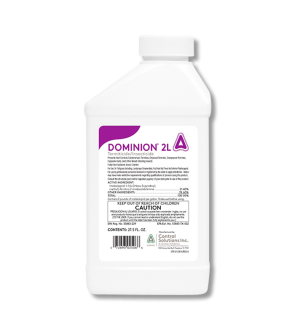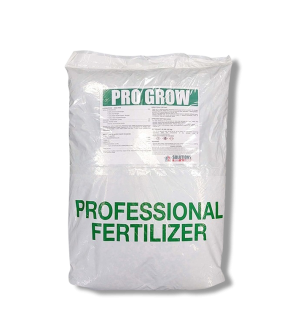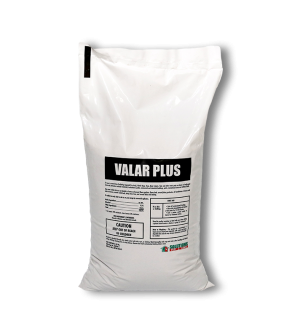Summer Lawn Care Tips: Lawn Care Basics
Most Effective Products
Summer Lawn Care Tips: Lawn Care Basics
When summer arrives, you want your lawn not only to look great but to also fight off the stress of higher temperatures and possible drought. Summer is also a time when lawn pests like weeds and turf insects really begin to take hold, which makes it crucial for your lawn to be strong and healthy to combat invaders.
If you are wondering what you should do to keep your lawn thriving all summer long, we have some expert tips and practices you can implement today that will make a big difference in your lawn's health by summer's end.
Understanding Grass Types

Depending on what region of the country you are in, the times you conduct certain maintenance duties and the specific tasks may vary. For instance, in the south, Summer can last quite a long time and winter weather may not appear til much later than it would if say, you’re living in the Midwest or Northern states.
In order to properly care for and maintain your grass, you need to know what type of grass you have on your property. Grasses are classified into two groups: warm-season grasses and cool-season grasses.
Cool Season Grasses
If you have cool-season grass, chances are you live in the Northern portion of the United States. By definition, cool-season grasses are grass types which thrive in areas of the country where temperatures are much cooler (Between 65 to 75 degrees) during the bulk of the growing season.
States which are commonly known to have cool-season grasses include: Connecticut, Delaware, Idaho, Iowa, Massachusetts, Maryland, Maine, Michigan, Minnesota, Montana, Nebraska, New Hampshire, New Jersey, New York, North Dakota, Oregon, Pennsylvania, Rhode Island, South Dakota, Utah, Vermont, Washington, Wisconsin, Wyoming
Common species of cool-season grasses: Kentucky Bluegrass, Annual Ryegrass, Perennial Ryegrass, Fine Fescue, Tall Fescue, Creeping Bentgrass.
Warm Season Grasses
In contrast to cool-season grass, warm-season grasses do better under warmer and more humid weather conditions primarily in the southern parts of the country where the temperature can be upwards of 85 to 90 degrees during the growing season.
States which are commonly known to have warm-season grasses include: South Carolina, Georgia, Alabama, Mississippi, Louisiana, Florida, California, Arizona, New Mexico, Texas, Arkansas.
Common species of warm-season grasses: Bahiagrass, Bermudagrass, Blend, Buffalograss, Carpetgrass, Centipedegrass, St. Augustinegrass, Zoysiagrass
Basic Summer Lawn Care Tips
Summer lawn care does not have to be a complicated time-consuming project to take on. By conducting simple routine practices and being consistent with them, your lawn will get the care it needs to survive the stress of summer.
Stay consistent with Mowing

To keep your lawn turf green, healthy, and growing all summer lawn, keep a consistent mowing and watering schedule. For mowing, it is recommended to mow on a higher blade setting. Setting the mower height to 3 to 4 inches tall and mowing once a week will help promote long, deep, healthy roots.
Water Grass Deeply and Infrequently

Depending on how hot your summers can get where you live, you may have to adjust how frequently you water but the standard should be at least 1 to 1.5 inches of water per week, either through irrigation or rainfall. Time irrigation for early morning (between 6 and 10 a.m.) to minimize water loss to evaporation.
Use a Good Summer Fertilizer

While spring and fall are the ideal times of the year to apply fertilizer to your lawns, summer can also be a good time to give your grass some nourishment as they struggle to withstand the heat. Both warm and cool-season grasses benefit from summer feeding. Warm-season grasses in particular grow more actively when the temps are higher, so another round of fertilizer can aid them with fuel and sustain them until fall arrives.
We recommend using a fertilizer with a fertilizer with a 50% slow-release nitrogen formulation such as our Summer Pro Grow summer blend.
Summer Weed and Pest Control

Late spring to very early summer is the perfect time to kill off any pesky weeds which have emerged on your lawn. This is because it’s best to hit them in the early stages when they are vulnerable as it may be tougher to control them when they have matured.
Solutions Pest & Lawn has a lot of options for post-emergent herbicides but it’s best to know What type of weed you have so you can choose the right herbicide to treat the weed outbreak.
Eliminate Lawn Pests With Pesticides
Warmer weather often signals the arrival of unwanted insects to your yard. Some of the more notorious ones which like to eat your turf are grub worms, the larvae stage of various types of beetles. These fat white grubs love to hide under the soil and feed on the tender root systems of lawns.
If you don’t check your soil for the presence of grubs, you will definitely recognize that something is up when your lawn is affected by their feeding frenzy with brown patches and wilted grass. You can check for grubs by pulling back the sod and looking for those c-shaped worms. If you discover them, you should treat your lawn with an insecticide like Supreme IT Insecticide or Dominion 2L.
Summer is also a time to when ants like to set up shop near a home and develop their colony. You don't want an ugly ant mound to be an eyesore on your lawn.
You can use the same insecticide products mentioned above as well as lay out insecticide granules like Valar Plus Bifenthrin Granules on your lawn to deal with ants and other insects that may be a threat to your turf.














































































































































































































































































































































































































































































































































